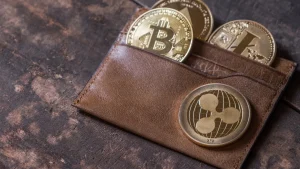Nowadays, buying cryptocurrency is a quest. It is important to do this quickly, with a minimum commission, and it is desirable that the bank does not block the account, and the tax service does not make claims. But an even more important issue is the choice of where to store the cryptocurrency.

Let’s figure out together what storage methods exist, which ones should be used, and which ones should be avoided.
First, a little theory and terminology to better navigate the technologies for storing cryptocurrency assets. First of all, you need to understand that crypto-currency “storage” services are called “wallets” only conditionally and for simplicity. In fact, all your crypto is stored on the blockchain, and wallets are services for interacting with your crypto on the blockchain.
The main parameters of cryptocurrency storage services, i.e. wallets is a way to store private keys and a mode of operation.
Key storage method (custodial or non-custodial wallets)
Custodial
- Private keys are stored by the service itself, access by password, codes in sms / e-mail / authenticators, etc.
- Quick and easy access
- Wide functionality, exchange operations, etc.
- Low anonymity
- Risk of sanctions and restrictions
- non-custodial
Private keys are stored directly with the user
- Full control over assets
- High anonymity
- More complex authorization
- Cryptocurrency-only wallet
- Inability to restore the wallet if the seed phrase is lost
- Many keep their funds on cryptocurrency exchanges, which are examples of custodial wallets. It is convenient to store funds on the exchange, you can trade in parallel, but keep in mind that if the exchange has questions for you for some reason, access to your crypt will be blocked in a second.
Operating mode (hot and cold wallets)
Hot wallets are constantly connected to the network, they work quickly and provide maximum functionality. Almost all hot wallets are custodial
- Always online
- Ease of use
- Low burglary resistance
Cold wallets are connected to the network only for a short period of time and only in order to transfer information about the transaction to the blockchain. Their functionality is limited, but resistance to hacking is maximum.
Online only at the time of the transaction
- High burglary resistance
- Poor usability
- Thus, cold wallets are better suited for long-term storage, but if you actively use cryptocurrency, often make transactions, then a hot wallet is also indispensable.
Sometimes hot wallets are confused with custodial ones. This is a mistake, cold wallets are always non-custodial, but some hot wallets are also non-custodial.

In terms of usage, wallets can be local, i.e. installed on the user’s computer, mobile, i.e. on a smartphone, hardware, i.e. in the form of a flash drive, online, i.e. in the form of a website and even paper, i.e. simply printed on a sheet of paper.
There are also cross-platform wallets that you can use both locally and on mobile devices, such as Metamask, Exodus, Blockstream Green, etc.
Since the beginning of my acquaintance with the crypto industry in 2017, I have tried almost all the services that are currently on the market. Below I will share information on the appropriateness of using a particular wallet, based on my own experience.
